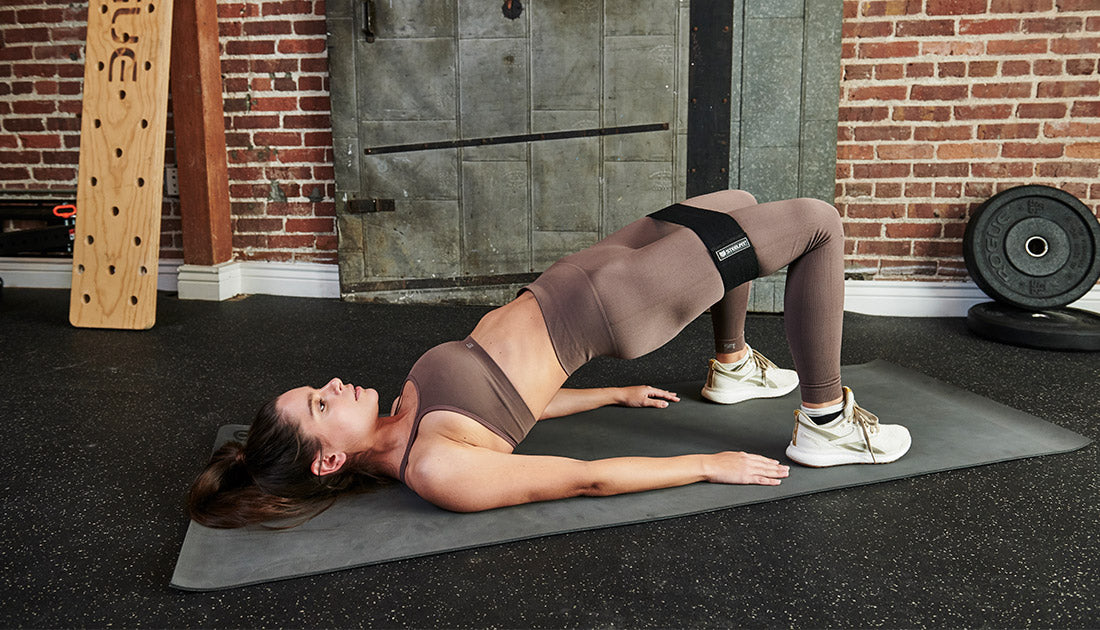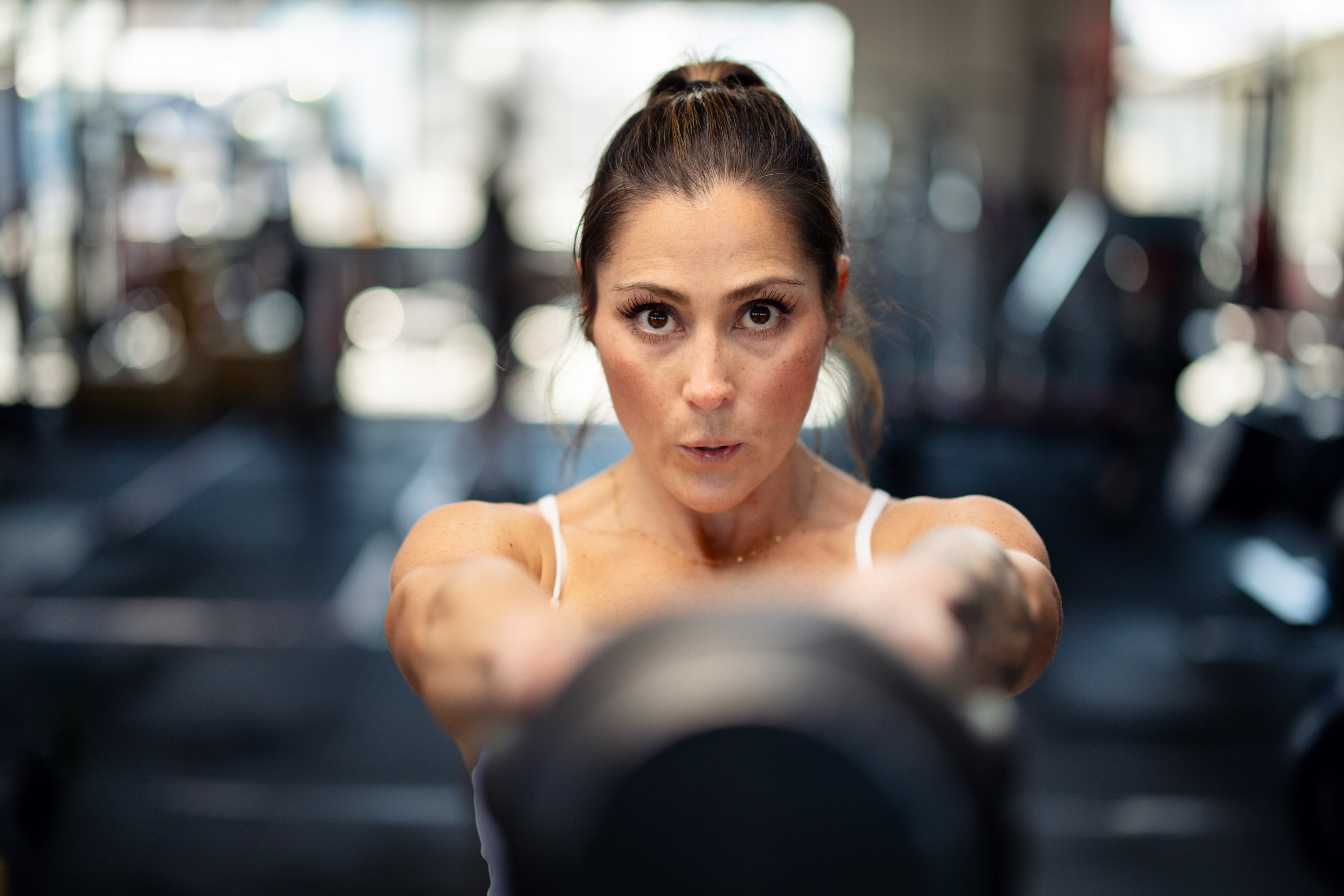When it comes to building a bigger, stronger, and curvier butt, few exercises rival the sheer booty-building power of the hip thrust.
It's been a staple in female workouts for years, and believe it or not; it's also beginning to find a foothold in the training programs of many men too!
The reason for this is building a bigger, stronger butt has numerous benefits, including increased performance, reduced injury risk, and looking better in (or out) of pants.
Today, we take a deep dive into all things hip thrusts!
Let’s get started by first discussing...
Muscles That Hip Thrusts Work
It comes as no surprise that hip thrusts work the muscles surrounding the hips, including the glutes, but those aren’t the only muscles involved during this compound lower body exercise.
Glutes
First and foremost, hip thrusts train the glutes (glute max, gluteus medius, and gluteus minimus). The gluteus maximus, which is the largest muscle of the glute complex, does the brunt of the heavy lifting here, which is excellent since the glute max is also the muscle most responsible for the size and shape of your booty!
Meanwhile, the gluteus medius assists in hip extension and stabilizes the pelvis so that your gluteus maximus can drive hip extension -- the primary movement pattern of the hip thrust.
Hamstrings
In addition to training the glutes, the hip thrust also activates the hamstrings as they help keep the knee fixed throughout the movement. The hamstrings also work isometrically to maintain a 90-degree bend in the knees during the exercise.
If you’re new to performing hip thrusts, don’t be surprised if you get some intense contractions/cramping in your hamstrings (and glutes) the first few times performing the exercise.
Be aware, though, that if the contractions/cramps are too intense (to the point where you can’t keep training), it’s possible that you may not be extending the hips fully and/or allowing for enough bend in your knees.
Remember, the hamstrings are involved to a degree during hip thrusts, but they’re not the primary focus of the exercise. As such, you should only feel a mild contraction in them during the exercise.
Adductors
The adductors (the muscles on the inner thighs) work to help stabilize the pelvis during the hip thrust (as well as other hip extension exercises like Romanian deadlifts).
If you want to increase the degree to which you’re activating the adductors during the hip thrust, you can also place a foam roller between your thighs and squeeze them together to hold the foam roller in place while you extend the hips.
Abs/Core
Last but not least, the abs are involved -- as they are in just about every other type of exercise you perform. Maintaining a tight core is essential for spinal stability. It also helps prevent hyperextension of the spine and allows for better performance (i.e., lifting more weight...which fosters greater booty gains!).
How to do Barbell Hip Thrusts
There are a number of hip thrust variations that you can perform, but, by and large, the version most often performed by gym rats is the barbell hip thrust.
Here’s how to perform it:
Set-Up
Sit on the floor with your feet planted, knees bent, and your back up against the edge of a bench.
Next, roll a loaded barbell into the crease of your hips (if you're new to the exercise, begin with an empty barbell or, even better, use your body weight).
If placing the loaded barbell across your hips causes discomfort, you can wrap a towel or pad around the bar to make it more comfortable.
Also, keep in mind that your knees should be bent ~90 degrees, as this will provide better stability.
Stabilize
With the barbell secured in your hip crease, your shoulders should be pressing back into the bench; you want your shoulder blades to be on the bench and your upper body and hips in one straight line.
Thrust
Now that you're in position tighten the core and keep your back flat. Drive through the heels, contract your booty, and lift the hips.
At the top of each rep, squeeze the glutes and count to one before descending.
Additionally, at the top of the hip thrust, your hips should be roughly level with your shoulders so that the torso is parallel to the floor.
A common mistake during set up and execution is for a lifter to arch (hyperextend) the lower back and miss-load the hips at the bottom of the position.
You want your torso to be locked tight so that the hips do the movement, not your back.
How to Perform Hip Thrusts at Home
Fitness enthusiasts are training at home more than ever these days, but not everyone has access to specialized gym equipment -- hip thrust machines, benches, barbells, smith machines, etc.
So, how can you get the booty-building benefits of the hip thrust from the comfort of your very own home?
Well…
If you have a bench, couch, or ottoman, you're halfway there. Place your shoulders across the platform of choice, and you can hip thrust just as you would in the gym.
Now, if you have a barbell and sufficient weight plates in your home gym, you can perform the exercise pretty much how you would in the gym.
If, however, you don't have a barbell and/or sufficient weight plates at home, you'll need to get more innovative.
Short of loading up some PVC or steel pipe with paint cans, milk jugs, water bottles, etc., you can instead perform the single-leg hip thrust.
Since you're only working one leg at a time, you won't need to use it as much as you would if you were performing the movement bilaterally (with both legs). This is great for individuals who have limited and/or no weights at home as you can still generate a gigantic contraction in the glutes and avoid lower back stress.
The result is greater intensity and focus on a single side of your booty while sparing your hips and lower back.
Single-leg hip thrusts using just bodyweight will be more than enough challenge for many of you reading this.
If you’re looking to up the ante, you can increase the challenge (without adding external loading) by slowing down the eccentric, holding the contraction for 2-3 seconds, or performing 1-½ reps.
Another option is to perform a superset where you perform sliding leg curls on the floor (using furniture sliders or hand towels under your feet) and then going right into single-leg hip thrusts afterward to burn out the glutes and hamstrings.
And, for even more challenges, you can add our high-quality hip band and/or mini-loop bands around your hips and ankles. In addition to increasing the resistance of the hip thrust, using bands also increases the activation of the gluteus medius -- a typically underdeveloped muscle in many individuals and plays a critical role in hip stability.
Common Hip Thrust Mistakes
Here are a few of the most common mistakes gym rats (both novice and experienced) make when performing hip thrusts
Not Using a Full Range of Motion
This is possibly the biggest mistake that not only affects the hip thrust but just about every other exercise being performed at gyms around the world.
If you're not using a full range of motion, you're not getting the maximum amount of muscle-building bang for your effort in the gym.
Stopping short of parallel (in the case of the hip thrust, specifically) prevents complete activation and contraction of the glutes, which means you're leaving potential booty gains on the table.
Going Too Heavy
Another big-time no-no that many individuals routinely do is selecting a weight that's too heavy for their current strength levels. Going too heavy leads to sloppy technique and (more often than not) incomplete range of motion, which reduces the muscle building-stimulus of an exercise and increases the risk of strain or injury.
You need to challenge your muscles, but not at the expense of proper technique.
Incorrect Foot Placement
Placing your feet too far in front of you will turn the hip thrust into more of a hamstring-dominant exercise than a glute-dominant one. On the flip side, having them too close to your body will make the exercise more quad engagement.
It'll take a bit of experimentation to find the right foot position for your body, but there should be a 90-degree angle forming between your thigh and lower leg at the top of the movement.
Not Maintaining a Neutral Lower Back
We touched on this above briefly, but be careful not to hyperextend (excessively arch) your lower back during the exercise.
Contract the abs to help pull your ribs down and keep your lower back neutral. This helps guard against straining the lower back while allowing you to achieve full extension of the hips.
Coming Up Onto the Toes
Squats aren’t the only exercise where many people have difficulty with coming up on their toes. The same is known to happen during hip thrusts, too.
More often than not, coming up onto the toes (and letting the heels come off the ground) occurs due to incorrect foot placement.
If you find this happening, lower the weight and reassess where your feet are positioned during the exercise set-up. Remember, you want your upper and lower legs to form a 90-degree angle at the top. And, when performing the hip thrust, on driving through the heels.

